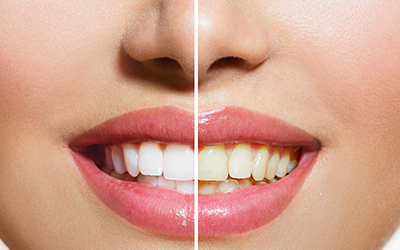Posted on Oct 11, 2021
File ID 36102943 | © Subbotina | Dreamstime.com

Teeth whitening of numerous sorts has become progressively well-known lately. However, our teeth are, for the most part, white in general; tooth enamel can be many shades and can become stained over a period of time. Teeth might be stained for an assortment of reasons—some in your control and others because of injury or disease. Let's look at the different teeth whitening approaches.
At-home whitening kits can be bought from your dentist or over the counter. There are numerous types of treatments, including whitening strips, trays, lights, flushes, and brushes. They usually contain peroxide, which works underneath the surface to lighten your tooth enamel and is utilized consistently over days or weeks.
Your dentist might make a custom whitening tray to accommodate your upper and lower teeth better than the one-size-fits-all tray you can buy at a store. With these custom trays, you'll place the whitening gel in the tray, fit the tray in your mouth, and wear them for brief time frames during the day or overnight, contingent upon your dentist's recommendation. However, the peroxide might bother your teeth, causing sensitivity; hence, it's wise to follow your dentist's instructions.
Professional whitening is done in a dental office. In-office whiteners are more effective than the other two choices since they typically contain a higher percentage of peroxide. They can also change the shade of your teeth quicker than at-home techniques.
The in-office whitening requires about sixty minutes. To assist with shielding your mouth from peroxide, your gum tissues are covered with either a thin sheet of elastic or a defensive gel. Sometimes a light or laser is utilized to activate the peroxide.
For more information regarding teeth whitening, please visit Meadows Family Dentistry and book a consultation session with Dr. Preston Polson to learn about the treatments they offer.